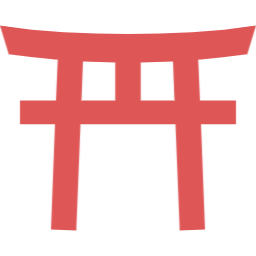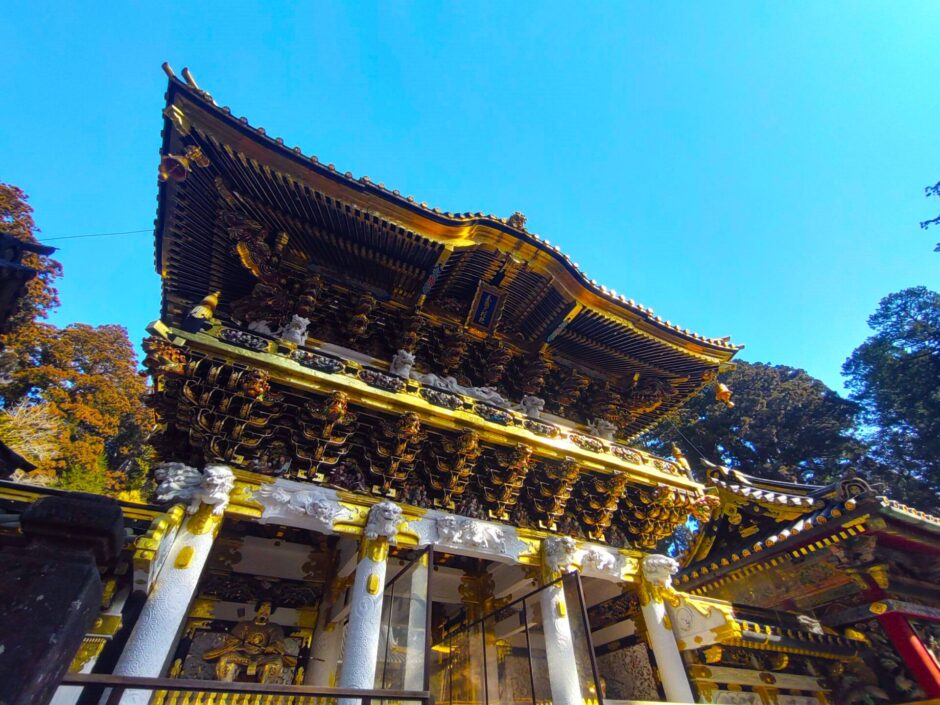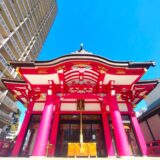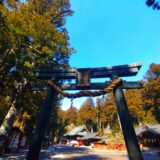【Nikko Toshogu Shrine summary】
Nikko Toshogu Shrine was built in 1617. On April 17, Genna 2 (June 1, 1616) during the Edo period, Tokugawa Ieyasu died in present-day Shizuoka City. His remains were buried in Kunouzan Toshogu Shrine, but in the following year, 1617, the second shogun, Hidetada, had the remains moved to Nikko in accordance with Ieyasu’s will.
The official name of the shrine is “Toshogu” without any place names, and it is the head shrine of all Toshogu shrines in Japan. Together with Kunouzan Toshogu and Ueno Toshogu, it is one of the three major Toshogu shrines. Other Toshogu shrines are located throughout the country. The two shrines and one temple, including the adjacent Rinnoji Temple and Nikko Futaarasan Shrine, are registered as UNESCO World Cultural Heritage sites as “Shrines and Temples of Nikko.
The deity is Toshodai Gongen, the deified version of Tokugawa Ieyasu, the first shogun of the Edo Shogunate.
![Nikko Toshogu Shrine [Tochigi] DSC 0220 160x160 - Nikko Toshogu Shrine [Tochigi]](https://japan-shrine.info/wp-content/uploads/DSC_0220-160x160.jpg) Kunouzan Toshogu Shrine [Shizuoka]
Kunouzan Toshogu Shrine [Shizuoka]
【Nikko Toshogu Shrine Stone torii (first torii)】
The stone torii gate was built in the Edo period (1603-1867) and is the largest in Japan at 9.2 meters high. It is said that 15 stones were transported and piled up by sea, water and land.
![Nikko Toshogu Shrine [Tochigi] DSC 1958 1024x767 - Nikko Toshogu Shrine [Tochigi]](https://japan-shrine.info/wp-content/uploads/DSC_1958-1024x767.jpg)
If you look closely, you can see the seam.
【Nikko Toshogu Shrine Renwang Gate】
![Nikko Toshogu Shrine [Tochigi] DSC 2030 1024x742 - Nikko Toshogu Shrine [Tochigi]](https://japan-shrine.info/wp-content/uploads/DSC_2030-1024x742.jpg)
From this gate, visitors enter a toll area (1,600 yen per person). The gate was modeled after the Tengenmon Gate of Todaiji Temple in Nara, which was rebuilt in 1636, and the pillars are decorated with 66 carvings including tapirs and elephants.
![Nikko Toshogu Shrine [Tochigi] DSC 2029 1024x768 - Nikko Toshogu Shrine [Tochigi]](https://japan-shrine.info/wp-content/uploads/DSC_2029-1024x768.jpg)
It is also called Nio-mon Gate because of the Nio statues enshrined on both sides. It is now designated as a National Important Cultural Property.
【Nikko Toshogu Shrine Shinmaya (Shinto Stable)(Sculpture of three monkeys (see monkey, speak monkey, and hear monkey))】
After passing through the front gate, you will see the shinkyusha (stable house) on your left. The shinkyusha is a building used to connect sacred horses that serve the gods.
![Nikko Toshogu Shrine [Tochigi] DSC 1967 1024x768 - Nikko Toshogu Shrine [Tochigi]](https://japan-shrine.info/wp-content/uploads/DSC_1967-1024x768.jpg)
Since monkeys are believed to protect horses, there are eight sculptures of monkeys on the long posts, in which events and commandments in the life of a human being are carved as monkeys.
![Nikko Toshogu Shrine [Tochigi] DSC 1969 1024x768 - Nikko Toshogu Shrine [Tochigi]](https://japan-shrine.info/wp-content/uploads/DSC_1969-1024x768.jpg)
The most famous monkeys are the three “see monkey, hear monkey, speak monkey”.
【Nikko Toshogu Shrine Copper torii (second torii)】
![Nikko Toshogu Shrine [Tochigi] DSC 2027 2 1024x768 - Nikko Toshogu Shrine [Tochigi]](https://japan-shrine.info/wp-content/uploads/DSC_2027-2-1024x768.jpg)
The first and oldest bronze torii gate in Japan was dedicated by Tokugawa Iemitsu during the Kan’ei Era construction in 1636. Many people took pictures of the view from here, as the Yomeimon Gate can be seen in front of the gate.
【Nikko Toshogu Shrine national treasure Yomeimon Gate】
![Nikko Toshogu Shrine [Tochigi] DSC 1976 1024x768 - Nikko Toshogu Shrine [Tochigi]](https://japan-shrine.info/wp-content/uploads/DSC_1976-1024x768.jpg)
The Yomeimon Gate is one of the most symbolic buildings in Nikko Toshogu. It is decorated with about 500 carvings of sacred animals and birds, flowers and birds, etc., and is called “Higurashimon” (meaning “sunset gate”) because it is so beautiful that one could look at it all day long and never get tired of it. It was restored at a cost of approximately 1 billion yen (240,000 pieces of gold leaf measuring approximately 10 cm on each side were applied) during the Heisei Era (Heisei Era) Great Restoration. It is now designated as a National Treasure.
![Nikko Toshogu Shrine [Tochigi] DSC 2007 1024x768 - Nikko Toshogu Shrine [Tochigi]](https://japan-shrine.info/wp-content/uploads/DSC_2007-1024x768.jpg)
It is so overwhelmingly powerful that you cannot see it in other shrines. The dragon paintings on the ceiling of the gate were very beautiful and powerful as well.
![Nikko Toshogu Shrine [Tochigi] DSC 1978 1024x750 - Nikko Toshogu Shrine [Tochigi]](https://japan-shrine.info/wp-content/uploads/DSC_1978-1024x750.jpg)
It is difficult to view the exhibition in a calm and relaxed manner due to the number of tourists who come to see the exhibition.
【Nikko Toshogu Shrine Karamon (Chinese gate)】
Passing through the Yomeimon Gate, you will see the Karamon (Chinese gate), which shines in white and gold.
![Nikko Toshogu Shrine [Tochigi] DSC 1984 1024x768 - Nikko Toshogu Shrine [Tochigi]](https://japan-shrine.info/wp-content/uploads/DSC_1984-1024x768.jpg)
It was built in 1617 (Genna 3) and rebuilt in 1636 (Kan’ei 13), and only shogunate vassals and feudal lords who were allowed to meet the shogun in person were allowed to pass through this gate. There is a money-offering box in front of the gate, and visitors can pray toward the main shrine from here. This gate is also now designated as a national treasure.
![Nikko Toshogu Shrine [Tochigi] DSC 1985 1024x768 - Nikko Toshogu Shrine [Tochigi]](https://japan-shrine.info/wp-content/uploads/DSC_1985-1024x768.jpg)
You can enter the Toshogu Shrine from the right side, but please note that photography is prohibited inside. You will be overwhelmed by the magnificent black on white decorations.
【Nikko Toshogu Shrine GOSHUIN】
![Nikko Toshogu Shrine [Tochigi] toshogu g1 694x1024 - Nikko Toshogu Shrine [Tochigi]](https://japan-shrine.info/wp-content/uploads/toshogu-g1-694x1024.jpg)
【Nikko Toshogu Shrine Sleeping cat and approach to Okusha Shrine】
On the way to Okusha Shrine, there is a sculpture “Sleeping Cat” on the east corridor under the Sakashimon gate.
![Nikko Toshogu Shrine [Tochigi] DSC 1988 1024x768 - Nikko Toshogu Shrine [Tochigi]](https://japan-shrine.info/wp-content/uploads/DSC_1988-1024x768.jpg)
The cat snoozing in the sunlight, which is associated with Nikko, represents “a time so peaceful that cats go to sleep,” and the sculpture is said to symbolize the safety of the Tokugawa Shogunate.
![Nikko Toshogu Shrine [Tochigi] DSC 2003 1024x768 - Nikko Toshogu Shrine [Tochigi]](https://japan-shrine.info/wp-content/uploads/DSC_2003-1024x768.jpg)
Beyond the Sakashimon gate is an approach consisting of 207 steps leading to the inner shrine, to which only successive shoguns were allowed to ascend. The stone steps are made of a single piece of rock, and the stone corridors and the stone fences at the ends of the steps are not cut out of stone, but carefully carved out of a single piece of rock.
![Nikko Toshogu Shrine [Tochigi] DSC 2001 1024x768 - Nikko Toshogu Shrine [Tochigi]](https://japan-shrine.info/wp-content/uploads/DSC_2001-1024x768.jpg)
It may be a tough climb for the elderly or children, but if you have come all the way to Toshogu, you may want to visit the cemetery.
【Nikko Toshogu Shrine rear shrine (located behind the main shrine, but dedicated to the same deity)】
![Nikko Toshogu Shrine [Tochigi] DSC 1998 1024x768 - Nikko Toshogu Shrine [Tochigi]](https://japan-shrine.info/wp-content/uploads/DSC_1998-1024x768.jpg)
Located at the highest point of Toshogu, it was originally the most sacred place where only successive Tokugawa shoguns were allowed to enter. It is designated as a National Important Cultural Property. The worship hall is decorated in subdued colors, and Ieyasu’s tomb is located at the back of the hall.
【Nikko Toshogu Shrine two-storied Buddhist tower】
It is said that the hearse of Tokugawa Ieyasu has never been opened since it was built, and that it is currently made of Chinese bronze, about 5 meters high. When it was damaged by an earthquake in 1683, it was rebuilt in karakane by the 5th Shogun, Tsunayoshi Tokugawa.
![Nikko Toshogu Shrine [Tochigi] DSC 1995 1024x768 - Nikko Toshogu Shrine [Tochigi]](https://japan-shrine.info/wp-content/uploads/DSC_1995-1024x768.jpg)
【Nikko Toshogu Shrine rear shrine GOSHUIN】
![Nikko Toshogu Shrine [Tochigi] toshogu g2 691x1024 - Nikko Toshogu Shrine [Tochigi]](https://japan-shrine.info/wp-content/uploads/toshogu-g2-691x1024.jpg)
【Nikko Toshogu Shrine Nearby attractions】
Kamihashi Bridge, Nikko Futarasan jinja Shrine, Rinnoji Temple, Taiyuin Temple, Takio Shrine, Rutsuman-gafuchi and Jiunji Temple
【Nikko Toshogu Shrine Access】
Manager’s Comments
I am sure many of you have been here before, as it is a standard school trip destination for Japanese schools. I have been here several times in the past, but this was my first visit after the restoration work. The beauty of the building was breathtaking, with its lacquer, rich colors, and numerous carvings on the pillars and other parts of the building. There are more than 50 buildings that are national treasures and important cultural properties, so the attractions are overwhelming. The atmosphere was entertaining and different from the nature-worshipping Shinto architecture. It would be better to arrive before 9:00 a.m. because there are many school excursion students and foreign tourists.
 Tour of Japanese shrines and temples
Tour of Japanese shrines and temples 

![Nikko Toshogu Shrine [Tochigi] DSC 1936 520x300 - Nikko Toshogu Shrine [Tochigi]](https://japan-shrine.info/wp-content/uploads/DSC_1936-520x300.jpg)
![Nikko Toshogu Shrine [Tochigi] DSC 2034 520x300 - Nikko Toshogu Shrine [Tochigi]](https://japan-shrine.info/wp-content/uploads/DSC_2034-520x300.jpg)
![Nikko Toshogu Shrine [Tochigi] DSC 2076 520x300 - Nikko Toshogu Shrine [Tochigi]](https://japan-shrine.info/wp-content/uploads/DSC_2076-520x300.jpg)
![Nikko Toshogu Shrine [Tochigi] DSC 2153 520x300 - Nikko Toshogu Shrine [Tochigi]](https://japan-shrine.info/wp-content/uploads/DSC_2153-520x300.jpg)
![Nikko Toshogu Shrine [Tochigi] DSC 2119 520x300 - Nikko Toshogu Shrine [Tochigi]](https://japan-shrine.info/wp-content/uploads/DSC_2119-520x300.jpg)
![Nikko Toshogu Shrine [Tochigi] DSC 2076 150x150 - Nikko Toshogu Shrine [Tochigi]](https://japan-shrine.info/wp-content/uploads/DSC_2076-150x150.jpg)
![Nikko Toshogu Shrine [Tochigi] DSC 2034 150x150 - Nikko Toshogu Shrine [Tochigi]](https://japan-shrine.info/wp-content/uploads/DSC_2034-150x150.jpg)
![Nikko Toshogu Shrine [Tochigi] DSC 2153 150x150 - Nikko Toshogu Shrine [Tochigi]](https://japan-shrine.info/wp-content/uploads/DSC_2153-150x150.jpg)
![Nikko Toshogu Shrine [Tochigi] DSC 2119 150x150 - Nikko Toshogu Shrine [Tochigi]](https://japan-shrine.info/wp-content/uploads/DSC_2119-150x150.jpg)

